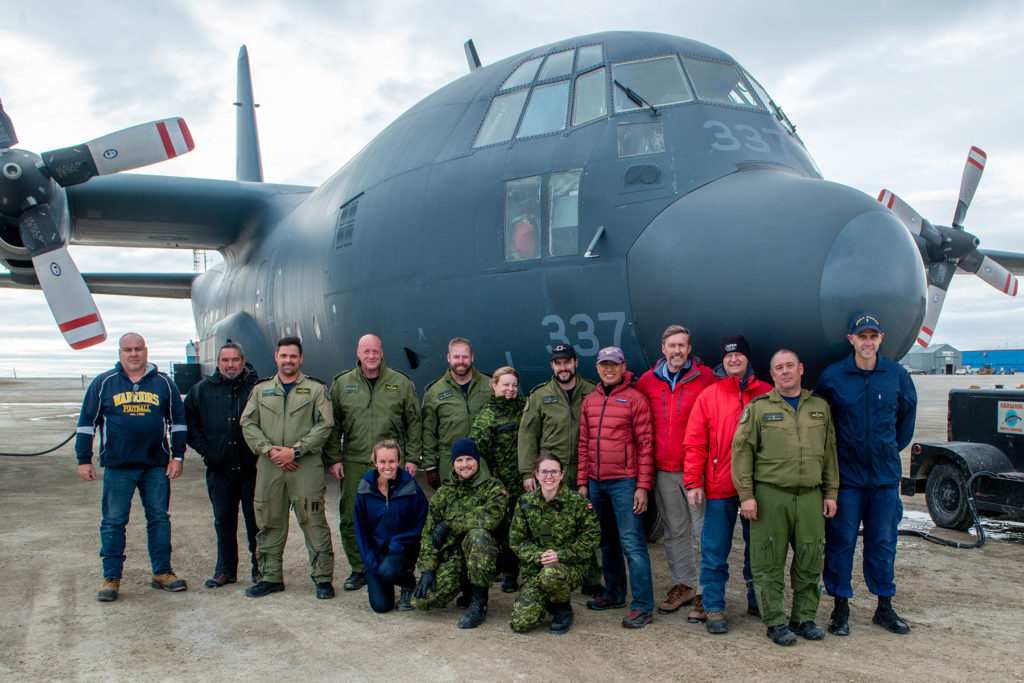Estimated reading time 3 minutes, 11 seconds.
The second week of July 2019 was an exciting one for members of 413 Search and Rescue Squadron as they left 14 Wing Greenwood, N.S., and headed north for the Arctic Buoy drop. This was the first time 14 Wing had been tasked with this annual mission.

The crew flew to Resolute Bay, Nunavut, which served as their home base for the two days it took to successfully drop the buoys. Resolute Bay is an Inuit hamlet on Cornwallis Island, with a population of about 200. This time of year, they experience 24 hours of daylight and an average temperature of 4.5 C.
The buoys themselves came in two flavours: three large ones, which were dropped from 91.5 metres above the water, and eight small ones, which were dropped from about 305 metres over either ice or water. If it was not too foggy, the buoys could be seen parachuting down to the white earth below. Once each settled, the meteorologist on board could almost immediately pinpoint its location. Along with a GPS and enough batteries to last for (hopefully) five years, the buoys possess technological capabilities to help track ice and weather conditions around the ice cap, ultimately leading to our everyday weather forecasts.
There are already many of these buoys spread across the Arctic, forming a meteorological network, so it’s the job of the trusted navigator to plan a suitable path, ensuring the drop locations aren’t overlapping with those of previous drops.
Teamwork made the trip possible. While the pilots, navigator and loadmasters came from 413 Squadron, the flight engineer and technician came from 424 Transport and Rescue Squadron, based at 8 Wing Trenton, Ont. 424 also provided the CC-130 Hercules on which approximately 34 flying hours were logged over four days, including transport to and from Resolute Bay and Trenton.
The rest of the team was composed of seven civilians from an array of organizations, including Environment Canada, Defence Research and Development Canada, the National Oceanic and Atmospheric Administration, the Office of Naval Research, and the University of Washington.
Together, this unique crew completed a successful drop and shared an exciting mission in a very remote part of the country.








